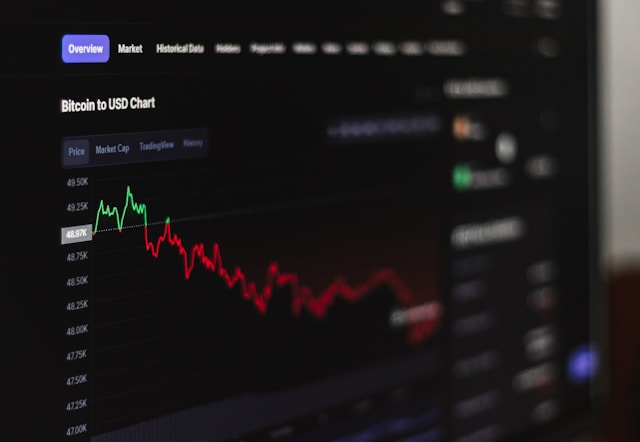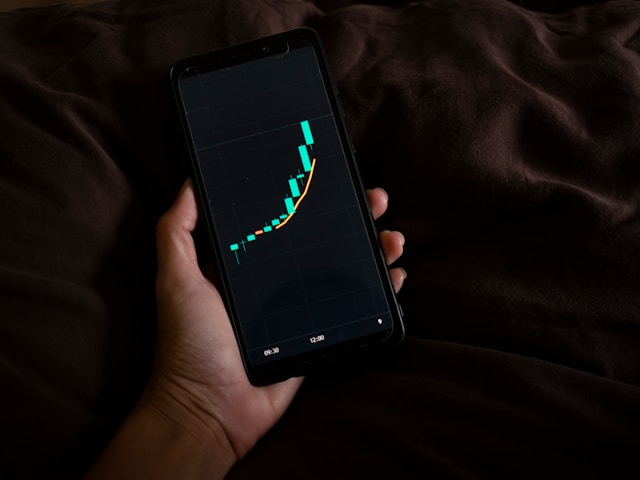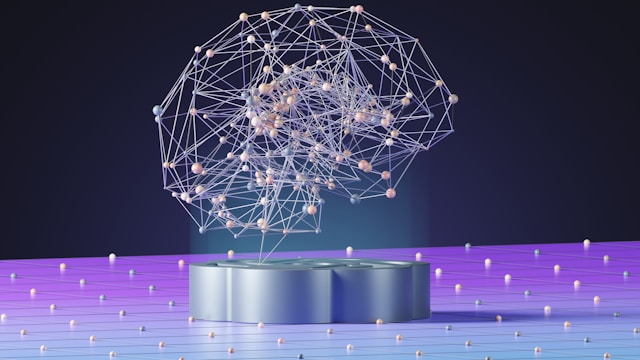The Future of Trading: Understanding Neuro AI Trading
Section 1: Understanding Neuro AI
What is Neuro AI?
Definition and Basics
Neuro AI, short for Neural Artificial Intelligence, combines neural networks and AI to create systems capable of mimicking human brain functions. These systems are designed to process large amounts of data, identify patterns, and make decisions based on learned experiences. The fundamental concept of Neuro AI revolves around deep learning, a subset of machine learning that utilizes multiple layers of neural networks to improve accuracy and performance over time.
Historical Context
The roots of Neuro AI can be traced back to the early development of neural networks in the mid-20th century. Pioneers like Warren McCulloch and Walter Pitts laid the groundwork with their neural model in 1943. Over the decades, advancements in computing power and data availability have fueled the evolution of Neuro AI, making it a powerful tool in various fields, including trading.
How Neuro AI Differs from Traditional AI
Comparison with Traditional AI and Machine Learning
Traditional AI typically relies on predefined algorithms and rules to perform tasks. While effective in specific applications, this approach lacks the adaptability and learning capability of Neuro AI. Machine learning introduced the concept of training models using data, but it is Neuro AI's deep learning techniques that truly revolutionize this process. Neuro AI employs neural networks that can autonomously learn and improve from data, enabling more sophisticated and accurate predictions.
Unique Features of Neuro AI
- Learning Capability: Unlike traditional AI, Neuro AI can learn from new data inputs, constantly refining its predictions.
- Complex Pattern Recognition: Neuro AI excels at recognizing complex patterns and relationships within data, which are often missed by traditional AI.
- Adaptability: Neuro AI systems can adapt to changing market conditions, making them particularly useful in the dynamic field of trading.
Applications of Neuro AI in Various Fields
Healthcare
In healthcare, Neuro AI is used for diagnosing diseases, predicting patient outcomes, and personalizing treatment plans. Its ability to analyze complex medical data and identify subtle patterns has proven invaluable.
Finance
Beyond trading, Neuro AI is applied in fraud detection, credit scoring, and risk management. Financial institutions leverage Neuro AI to analyze large datasets and detect anomalies that could indicate fraudulent activities or potential risks.
Robotics
Neuro AI powers advanced robotics, enabling robots to learn from their environment and perform tasks with a high degree of autonomy. This technology is essential in developing intelligent robots for manufacturing, service industries, and even space exploration.
Other Fields
Neuro AI is also used in fields like marketing for customer segmentation and targeting, in autonomous vehicles for navigation and decision-making, and in entertainment for personalized content recommendations.

Section 2: Neuro AI in Trading
How Neuro AI is Applied in Trading
Predictive Analytics
Neuro AI excels in predictive analytics, which is crucial for trading. By analyzing historical market data, news, social media sentiment, and other relevant factors, Neuro AI models can predict future market movements with a high degree of accuracy. These predictions help traders make informed decisions, reducing the risks associated with market volatility.
Automated Trading Systems
One of the most significant applications of Neuro AI in trading is the development of automated trading systems. These systems use Neuro AI algorithms to execute trades at optimal times, based on real-time data analysis. Automated trading not only enhances the efficiency of trading operations but also minimizes human error and emotional decision-making, leading to better overall performance.
Advantages of Neuro AI in Trading
Improved Accuracy
Neuro AI’s ability to analyze vast amounts of data and recognize complex patterns results in highly accurate trading predictions. This accuracy helps traders capitalize on profitable opportunities and avoid potential losses.
Speed and Efficiency
In the fast-paced world of trading, speed is essential. Neuro AI can process and analyze data in real-time, allowing for quick decision-making and execution of trades. This speed gives traders a competitive edge, enabling them to respond swiftly to market changes.
Adaptability
Market conditions are constantly changing, and Neuro AI systems are designed to adapt to these changes. By continuously learning from new data, Neuro AI can adjust its models and strategies, ensuring that trading decisions remain relevant and effective.
Case Studies
Case Study 1: Hedge Fund Success
A prominent hedge fund implemented Neuro AI to enhance its trading strategies. By using Neuro AI for predictive analytics and automated trading, the fund achieved a 20% increase in annual returns. The AI system’s ability to quickly adapt to market changes and identify lucrative trading opportunities was a key factor in this success.
Case Study 2: Individual Trader
An individual trader used a Neuro AI-powered trading platform to manage their investments. The platform analyzed market data and provided real-time trading signals. By following these signals, the trader saw a significant improvement in their trading performance, with a 15% increase in profits over six months.
Case Study 3: Financial Institution
A major financial institution integrated Neuro AI into its risk management processes. The AI system analyzed vast datasets to detect potential risks and anomalies. This proactive approach allowed the institution to mitigate risks more effectively, reducing potential losses and improving overall stability.

Section 3: Building a Neuro AI Trading System
Components of a Neuro AI Trading System
Data Collection and Processing
The foundation of any Neuro AI trading system is data. This includes historical price data, trading volumes, news articles, social media sentiment, and economic indicators. Collecting and processing this data involves:
- Data Sources: Identifying and integrating reliable data sources.
- Data Cleaning: Removing noise and errors to ensure high-quality input.
- Data Normalization: Standardizing data formats for consistency.
Neural Networks and Algorithms
At the core of a Neuro AI trading system are neural networks and algorithms designed to analyze data and make trading decisions. Key components include:
- Neural Network Architecture: Designing the structure of neural networks, including the number of layers and neurons.
- Training Algorithms: Using supervised, unsupervised, and reinforcement learning techniques to train the neural networks.
- Optimization Techniques: Implementing methods like gradient descent to fine-tune model parameters.
Steps to Develop a Neuro AI Trading System
Designing the System
The initial step in building a Neuro AI trading system is designing its architecture. This involves:
- Defining Objectives: Setting clear goals for the system, such as maximizing returns or minimizing risks.
- Choosing Models: Selecting appropriate neural network models and algorithms.
- System Architecture: Planning the overall system design, including data pipelines, model integration, and execution framework.
Training and Testing
Once the design is finalized, the system undergoes training and testing:
- Data Splitting: Dividing data into training, validation, and test sets.
- Model Training: Training neural networks using historical data.
- Backtesting: Testing the trained model on historical data to evaluate performance.
- Validation: Fine-tuning models based on validation results to ensure robustness.
Challenges and Considerations
Technical Challenges
Building a Neuro AI trading system comes with several technical challenges:
- Data Quality: Ensuring the data used is accurate and comprehensive.
- Computational Resources: Managing the computational power required for training complex models.
- Algorithm Complexity: Developing and fine-tuning sophisticated algorithms.
Ethical Challenges
Ethical considerations are crucial in Neuro AI trading:
- Transparency: Ensuring the trading system's decision-making process is transparent.
- Bias: Avoiding biases in the data and algorithms that could lead to unfair trading practices.
- Impact on Markets: Considering the potential impact of automated trading on market stability.
Regulatory and Compliance Issues
Traders must navigate regulatory and compliance challenges:
- Regulatory Compliance: Ensuring the trading system adheres to financial regulations.
- Risk Management: Implementing risk management strategies to protect against significant losses.
- Data Privacy: Maintaining the privacy and security of sensitive data used in the system.

Section 4: Tools and Technologies for Neuro AI Trading
Popular Tools and Platforms
Overview of Available Software and Platforms
Several tools and platforms are available to facilitate the development and implementation of Neuro AI trading systems. These include:
- TensorFlow: An open-source library developed by Google, TensorFlow is widely used for building and training neural networks. It offers a comprehensive suite of tools for machine learning and deep learning applications.
- PyTorch: Developed by Facebook's AI Research lab, PyTorch is another popular open-source library. It is known for its dynamic computation graph, which makes it easier to modify and debug neural networks.
- Keras: A high-level neural networks API, Keras is built on top of TensorFlow and provides a user-friendly interface for designing and training deep learning models.
- H2O.ai: This platform offers a range of machine learning and AI tools, including automated machine learning (AutoML) features, which are particularly useful for traders with limited programming expertise.
- NVIDIA GPUs: Graphics Processing Units (GPUs) from NVIDIA are essential for accelerating the training of deep learning models, significantly reducing the time required to develop Neuro AI trading systems.
Technological Requirements
Hardware and Software Requirements
Implementing a Neuro AI trading system requires a robust technological infrastructure. Key requirements include:
- High-Performance Computing (HPC): HPC systems with powerful CPUs and GPUs are necessary for processing large datasets and training complex neural networks.
- Data Storage Solutions: Efficient storage solutions, such as SSDs and distributed file systems, are crucial for managing vast amounts of data.
- Software Frameworks: Utilizing frameworks like TensorFlow, PyTorch, and Keras ensures a streamlined development process.
- APIs and Integration Tools: APIs for data retrieval and integration tools to connect various components of the trading system are essential for seamless operation.
Future Trends in Neuro AI Trading Technologies
Emerging Technologies
As Neuro AI continues to evolve, several emerging technologies are poised to transform the field of trading:
- Quantum Computing: Quantum computing holds the potential to revolutionize data processing speeds and enhance the performance of Neuro AI models, enabling more accurate and timely trading decisions.
- Edge Computing: By processing data closer to the source, edge computing can reduce latency and improve the efficiency of Neuro AI trading systems.
- Explainable AI (XAI): As regulatory and ethical concerns grow, the demand for explainable AI technologies is increasing. XAI aims to make AI decision-making processes more transparent and understandable.
Predictions for the Future
The future of Neuro AI trading is bright, with several trends expected to shape the industry:
- Increased Automation: Continued advancements in Neuro AI will lead to greater automation in trading, reducing the need for human intervention and enhancing efficiency.
- Integration with Other Technologies: Neuro AI trading systems will increasingly integrate with other technologies, such as blockchain and IoT, to provide more comprehensive and secure solutions.
- Regulatory Developments: As the adoption of Neuro AI in trading grows, regulatory frameworks will evolve to address the unique challenges and risks associated with automated trading.

Section 5: Practical Tips for Traders
How to Get Started with Neuro AI Trading
Initial Steps for Beginners
Starting with Neuro AI trading can seem daunting, but with the right approach, beginners can successfully navigate this advanced field:
- Educate Yourself: Gain a fundamental understanding of AI, machine learning, and neural networks. Online courses, books, and tutorials are valuable resources.
- Learn Trading Basics: Before diving into Neuro AI, ensure you have a solid grasp of trading principles, market analysis, and risk management.
- Select a Platform: Choose a trading platform that supports Neuro AI tools and technologies. Platforms like MetaTrader, QuantConnect, and TradingView offer robust features for AI trading.
- Experiment with Simulations: Use paper trading or demo accounts to practice Neuro AI trading strategies without risking real money. This allows you to refine your approach and build confidence.
Resources for Learning
- Online Courses: Platforms like Coursera, Udacity, and edX offer courses on AI and machine learning.
- Books: Titles like "Deep Learning" by Ian Goodfellow and "Artificial Intelligence: A Guide for Thinking Humans" by Melanie Mitchell provide in-depth knowledge.
- Communities: Join forums and online communities such as Stack Overflow, GitHub, and AI-specific Reddit threads to connect with other learners and experts.
Best Practices for Using Neuro AI Trading Systems
Strategies for Maximizing Effectiveness
To make the most of Neuro AI trading systems, consider the following best practices:
- Continuous Learning: Stay updated with the latest developments in AI and trading. Continuous learning is key to maintaining a competitive edge.
- Data Quality: Ensure the data you use is accurate, comprehensive, and up-to-date. Poor data quality can significantly impact the performance of your Neuro AI models.
- Backtesting: Regularly backtest your trading strategies using historical data to evaluate their effectiveness and make necessary adjustments.
Common Mistakes to Avoid
- Overfitting: Avoid overfitting your models to historical data, as this can lead to poor performance on new data.
- Ignoring Market Conditions: Always consider current market conditions and economic factors when making trading decisions.
- Neglecting Risk Management: Implement robust risk management strategies to protect your investments and minimize potential losses.
Evaluating and Improving Your Neuro AI Trading Strategy
Performance Metrics
Evaluating the performance of your Neuro AI trading strategy is crucial for ongoing improvement. Key metrics to monitor include:
- Accuracy: Measure how often your predictions align with actual market movements.
- Return on Investment (ROI): Track the profitability of your trading activities.
- Drawdown: Monitor the decline in the value of your portfolio from its peak to its trough.
- Sharpe Ratio: Calculate the risk-adjusted return of your trading strategy.
Continuous Improvement Techniques
- Regular Review: Periodically review and update your Neuro AI models and trading strategies based on performance metrics and market changes.
- Incorporate Feedback: Use feedback from backtesting and live trading to refine your models and strategies.
- Experiment with New Techniques: Stay open to experimenting with new AI techniques, algorithms, and data sources to enhance your trading approach.

Conclusion
Recap of Key Points
In this article, we've explored the revolutionary field of Neuro AI trading, highlighting its potential to transform trading strategies through advanced artificial intelligence and neural networks. We began by defining Neuro AI and its importance in the trading world. We then delved into the specific applications of Neuro AI in trading, showcasing its advantages and providing real-world case studies. We also discussed the essential components and steps required to build a Neuro AI trading system, as well as the tools and technologies that facilitate its implementation. Practical tips for traders were provided to help both beginners and professionals get started and optimize their Neuro AI trading strategies.
The Future of Neuro AI Trading
The future of Neuro AI trading is promising, with continuous advancements in AI technology expected to drive further innovation. As Neuro AI models become more sophisticated, their predictive accuracy and adaptability will improve, providing traders with even more powerful tools to navigate the complex and dynamic financial markets. The integration of emerging technologies such as quantum computing, edge computing, and explainable AI will further enhance the capabilities of Neuro AI trading systems, making them indispensable in the trading industry.
Final Thoughts and Recommendations
For traders looking to stay ahead of the curve, embracing Neuro AI trading is not just an option but a necessity. By leveraging the power of Neuro AI, traders can make more informed decisions, execute trades more efficiently, and ultimately achieve better financial outcomes. It is essential to stay informed about the latest developments in AI and trading, continuously improve your Neuro AI models and strategies, and adhere to ethical and regulatory standards. With dedication and the right approach, Neuro AI trading can be a game-changer for your trading endeavors.
